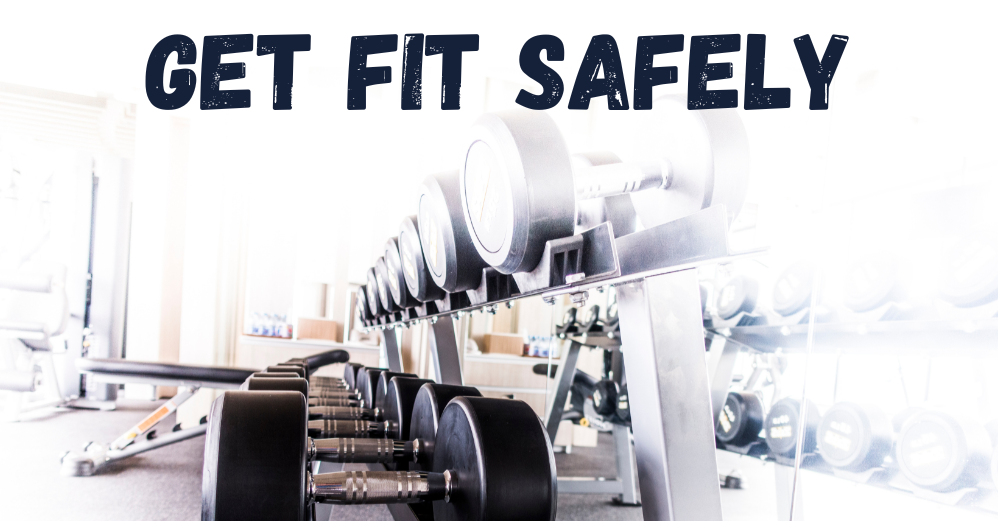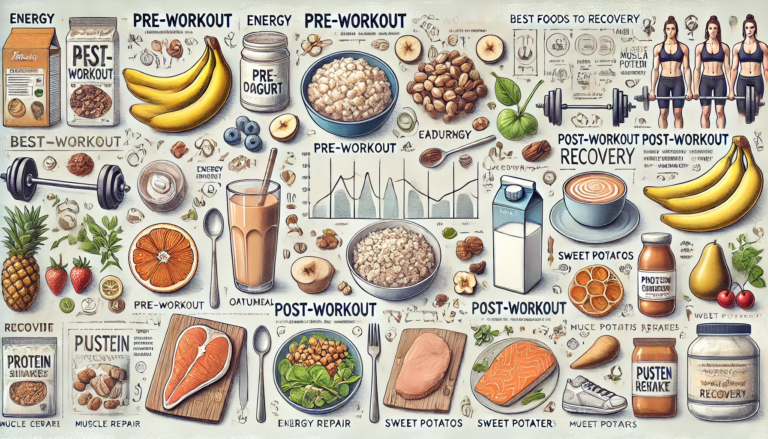I’ve been down the quick-fix road before, and let me tell you, it’s not all it’s cracked up to be.
Here’s the truth: slow and steady isn’t just a saying; it’s the secret to lasting results.
Now, I’ve been training for over 20 years, but let me be real—there was a time when I completely fell off the wagon.
I stopped working out, ate whatever I wanted, and spent more evenings at happy hours than in the gym.
Sound familiar?
That phase taught me a lot.
I realized that quick fixes don’t work, and neither does ignoring my health.
When I got back on track, I knew I needed a sustainable approach—one that didn’t feel like punishment.
So, grab your coffee, get comfy, and let’s chat about 18 reasons why patience is the ultimate weight loss superpower.
It worked for me, and I know it can work for you too.
1. Sustainable Habits to Beat the Yo-Yo Diet Trap

Let’s talk about the dreaded yo-yo diet cycle.
You lose weight quickly on a strict diet, but as soon as you slip back into your old habits, the pounds come rushing back—and sometimes bring friends.
Sound familiar?
This is what happens when the focus is on rapid results instead of lasting changes.
Quick fixes might look good in the short term, but they rarely prepare you for real life.
By taking a gradual approach, you can build habits that stick.
Swap soda for water.
Add a daily walk. Cook at home more often.
These small changes might not feel like much at first, but they build a foundation that helps you keep the weight off for good.
No more all-or-nothing diets.
No more “I’ll start again Monday” guilt.
With sustainable habits, the weight stays off, and you can finally escape the yo-yo cycle for good.
Because who wants to keep repeating the same frustrating process over and over again?
Not me.
And I’m guessing not you, either.
2. Reduces Stress on Your Body
Our bodies are pretty smart.
When we suddenly slash calories or over-exert ourselves, they go into survival mode.
I remember when I tried a crash diet; I felt tired, cranky, and just not myself.
That’s your body saying, “Whoa, what’s going on?”
By taking a gradual approach, you give your body time to adjust to new routines.
This means fewer negative side effects like fatigue, dizziness, or mood swings.
Your energy levels stay up, and you feel more balanced overall.
It’s like easing into a hot bath instead of jumping into scalding water.
Much more pleasant, right?
3. Minimizes Muscle Loss
Let’s clear something up—when we talk about weight loss, we really mean fat loss.
We want to keep that lean muscle mass.
Muscles are your body’s engine; they burn calories even when you’re not working out.
When you lose weight too quickly, your body might start breaking down muscle for energy.
Not ideal.
By losing weight slowly, especially when incorporating strength training, you help preserve muscle mass.
This not only keeps your metabolism running efficiently but also gives you that toned look.
I noticed that when I focused on gradual weight loss and lifted weights, I felt stronger and more energized.
It’s a win-win!
4. Avoids Nutrient Deficiencies
Crash diets often mean cutting out entire food groups.
Remember that no-carb craze?
I tried it once and felt miserable—no energy, constant headaches.
Our bodies need a variety of nutrients to function properly.
By eating a balanced diet and losing weight slowly, you ensure you’re getting all the vitamins and minerals you need.
Think of it like fueling a car.
You wouldn’t put the wrong type of gas in your tank, right?
Your body deserves the good stuff.
So go ahead, enjoy a colorful plate with proteins, healthy fats, and yes, even some carbs.
5. Better for Your Metabolism

Your metabolism is like a fire—it needs consistent fuel to keep burning.
When you drastically cut calories, your body thinks it’s starving and slows down your metabolism to conserve energy.
Not what we want.
By eating enough and losing weight gradually, you keep that metabolic fire stoked.
This means you burn more calories throughout the day, even at rest.
I found that when I ate regular, balanced meals, I had more energy and my weight loss was more consistent.
It’s all about keeping that fire burning.
6. Improves Mental Well-being

Let’s be honest, extreme dieting can take a toll on your mental health.
I remember feeling obsessed with counting calories and guilty if I slipped up.
It wasn’t healthy.
By adopting a slower approach, you reduce stress and anxiety around food.
You allow yourself flexibility and understand that perfection isn’t the goal—progress is.
This mindset shift can lead to a healthier relationship with food and yourself.
You’ll find more joy in the journey and less pressure to meet unrealistic expectations.
7. Encourages Mindful Eating
When you’re not rushing to lose weight, you can focus on how you eat, not just what you eat.
Mindful eating is all about paying attention to your hunger cues, savoring your food, and appreciating each meal.
I started noticing flavors and textures I hadn’t before.
Eating became an experience, not just a necessity.
This awareness can help prevent overeating and promote better digestion.
Plus, you start to truly enjoy your food without the guilt.
8. Builds Confidence Over Time
Every small victory builds your confidence.
Maybe it’s fitting into those jeans that were a bit snug or being able to run an extra mile.
These accomplishments add up and boost your self-esteem.
When you set realistic goals and achieve them, you prove to yourself that you can do it.
This confidence spills over into other areas of your life—work, relationships, personal growth.
I felt more empowered and capable, which motivated me to keep going.
9. Enhances Sleep Quality

Let me tell you, sleep is like the unsung hero of weight loss.
When I started focusing on gradual changes, I noticed I was sleeping better.
No more tossing and turning or staring at the ceiling at 3 AM.
Why?
Because slow weight loss doesn’t stress your body out.
When you’re not starving or overworking yourself, your body can relax and get the rest it needs.
Quality sleep helps regulate hormones like cortisol and ghrelin, which play a role in weight management.
So, by taking it easy, you’re not just losing weight—you’re catching some quality zzz’s too.
And who doesn’t love a good night’s sleep?
10. Supports Hormonal Balance
Speaking of hormones, did you know that rapid weight loss can throw them out of whack?
I learned this the hard way when I tried a fad diet and ended up feeling all sorts of off.
Our bodies rely on a delicate hormonal balance to function properly.
By losing weight slowly, you give your body time to adjust without causing chaos.
This means better mood stability, energy levels, and overall health.
It’s like tuning a guitar—you want to adjust the strings gently to get the perfect sound.
Go too fast, and you might snap a string.
11. Allows for Lifestyle Flexibility
One of the best things about taking the slow route is that it doesn’t require you to put your life on hold.
I used to dread social events because of my strict diet.
Now, I enjoy dinners out and the occasional slice of cake without guilt.
When you’re not rushing, there’s room for balance.
You can have that burger with friends and get back on track the next meal.
It’s about progress, not perfection.
Trust me, allowing yourself this flexibility makes the journey so much more enjoyable.
12. Promotes Better Digestion

Here’s something I didn’t expect—my digestion improved when I slowed down.
Crash diets and rapid weight loss can mess with your gut health, leading to discomfort and irregularity.
By focusing on whole foods and mindful eating, my digestive system started functioning better.
I had more energy, fewer stomach issues, and just felt lighter overall.
It’s amazing how your body responds when you treat it kindly.
Think of it as planting a garden—you need to nurture it patiently to see it flourish.
13. Financially Friendly
Have you ever added up how much those fancy diet plans and supplements cost?
I have, and let’s just say my wallet wasn’t happy.
Slow and steady weight loss doesn’t require special shakes, pills, or pricey programs.
It’s about making smarter choices with the foods you already have access to.
Cooking at home, choosing seasonal produce, and reducing processed foods can actually save you money.
Plus, you’re investing in your health, which is priceless.
14. Sets a Positive Example for Others
Believe it or not, your journey can inspire those around you.
When friends and family see you making gradual, sustainable changes, they might be motivated to do the same.
I noticed that when I stopped obsessing over quick results and focused on overall well-being, people around me became curious.
They started asking for tips and joining me for walks.
It’s a ripple effect—you never know who you’ll inspire just by being you.
15. Reduces Risk of Injury
Overdoing it at the gym in the name of rapid weight loss?
Guilty as charged.
I ended up with a strained back that set me back weeks.
By easing into a fitness routine, you allow your body to build strength and endurance safely.
This means fewer injuries and more consistent progress.
Remember, it’s not about punishing your body—it’s about nurturing it.
16. Enhances Self-Awareness
Taking your time gives you the opportunity to learn more about yourself.
You start to notice how different foods make you feel, what triggers unhealthy habits, and what activities you truly enjoy.
This self-awareness is a powerful tool.
It helps you make choices that align with your goals and values.
For me, it was realizing that I actually love early morning jogs—not because I had to, but because it set a positive tone for my day.
17. Improves Skin Health
An unexpected perk—my skin started glowing!
Rapid weight loss can sometimes lead to dull skin or even hair loss due to nutrient deficiencies.
By nourishing your body properly and staying hydrated, your skin reaps the benefits.
People started commenting on how healthy I looked, which was a nice confidence boost.
It’s like your body radiates the good care you’re giving it.
18. Fosters Long-Term Success
At the end of the day, the goal isn’t just to lose weight—it’s to maintain a healthy lifestyle.
By embracing the slow and steady approach, you’re setting yourself up for long-term success.
You’re building a solid foundation that can withstand life’s ups and downs.
I can honestly say that this journey has been about so much more than just the numbers on the scale.
It’s about feeling good in my own skin, having energy, and living life to the fullest.
And that’s something worth taking the time for.
The Science Behind Slow Weight Loss
Let’s get into some science, shall we?
Don’t worry, I’ll keep it fun—and yes, there’s a point to this!
There’s this fascinating study by Sumithran et al. (2011) that basically proves why crash diets are like trying to sprint through quicksand.
You might move fast for a bit, but eventually, you’ll sink.
Here’s what they found: Participants followed a super low-energy diet for 10 weeks and—no surprise—lost a bunch of weight.
But (and it’s a big but) their hormones went haywire.
The ones that tell your brain, “Hey, you’re full!”?
Those plummeted.
Meanwhile, the hormones that scream, “You’re starving!” cranked up the volume.
And get this: even a year later, those appetite-regulating hormones still hadn’t returned to normal.
A whole year of feeling like you’ve just run a marathon and are staring down a buffet.
I mean, who wouldn’t be tempted to dive headfirst into a pizza under those conditions?
This explains why maintaining weight loss after a crash diet feels like an uphill battle.
Your body’s basically sabotaging you, whispering, “Go ahead, have another slice.”
The study’s takeaway?
Rapid weight loss might help you shed pounds quickly, but it sets you up for long-term struggles.
Instead, the researchers suggest focusing on slow, steady progress.
Small changes to your diet, consistent physical activity, and—wait for it—patience.
Why?
Because gradual changes help stabilize those pesky hormones.
No more constant hunger pangs or wrestling with your willpower every time you pass the bakery.
Healthy Eating Practices and Metabolism Optimization Tips
Let’s talk about food and metabolism because, honestly, I’ve had my fair share of “What am I even doing?” moments with both.
If you’ve ever wondered why your energy dips after lunch or why some people seem to eat everything and stay lean, I’ve been there too.
The good news?
Optimizing your metabolism isn’t some mysterious art form—it’s a mix of common sense, small tweaks, and maybe a sprinkle of spice.
Here’s what’s worked for me (and kept my metabolism happy).
1# Start Your Day with Protein
When I started swapping my carb-loaded breakfasts for protein, it was a game changer.
Eggs, Greek yogurt, or even a leftover piece of chicken (yes, breakfast chicken) became my go-to.
I used to think breakfast was optional, but trust me, a good protein-packed meal in the morning gets your metabolism moving.
It’s like giving your body the green light to go full speed ahead.
2# Snack Like You Mean It
For a long time, my “snack” was whatever I could grab on the go—usually something sugary.
It always ended the same: a quick energy spike followed by me nodding off at my desk.
Now, I keep snacks simple and balanced.
A handful of nuts or some apple slices with peanut butter keep me satisfied without the sugar crash.
Honestly, it’s a relief not to feel like I’m running on fumes by 3 PM.
3# Hydration is Non-Negotiable
I’ll admit it—I was one of those people who barely drank water.
I’d get to the end of the day and wonder why my head was pounding.
Turns out, dehydration isn’t just uncomfortable—it messes with your metabolism too.
Now, I make it a point to keep water nearby at all times.
I even got one of those obnoxiously large water bottles to remind me.
Whatever works, right?
4# Don’t Skip Meals (Been There, Done That)
There was a phase where I thought skipping meals would “speed things up.”
Spoiler: it didn’t.
Instead, I was cranky, tired, and my workouts felt like dragging a truck uphill.
Now, I make sure to eat at regular intervals.
Even something small—like a piece of fruit or some nuts—keeps me fueled and my metabolism steady.
Trust me, consistency is key here.
5# Spice Things Up (Literally)
I used to think spices were just for taste, but turns out they do so much more.
Adding chili or turmeric to my meals not only makes them delicious but also gives my metabolism a little nudge.
Now, I sprinkle cayenne on my eggs like a pro.
It’s a small change, but it makes me feel like I’m winning the metabolism game.
6# Whole Foods Over Processed Junk
This one took me a while to accept because, let’s be real, processed food is convenient.
But every time I swapped out something processed for fresh veggies or whole grains, I felt the difference.
My energy stayed stable, and I wasn’t hungry an hour later.
Now, when I shop, I try to stick to the outer aisles of the grocery store where the fresh produce is.
7# Healthy Fats Are Your Friend
I used to avoid fats like they were out to get me.
Turns out, fats like avocados, nuts, and olive oil are actually amazing for keeping you full and your metabolism happy.
Adding a bit of olive oil to my salads or snacking on almonds was an easy fix that made a big difference.
Plus, who doesn’t love avocado toast?
8# Don’t Under-Eat (Guilty as Charged)
For a while, I thought eating less was the answer.
But then my energy tanked, my workouts suffered, and I realized my body wasn’t getting enough fuel.
Now, I focus on eating enough to support my activity levels.
It’s not about eating more—it’s about eating smarter.
And yes, that includes carbs.
Overcoming Weight Loss Plateaus: What to Do
I’ve been there, staring at the scale, wondering why it won’t budge.
But guess what?
Plateaus are a normal part of the journey.
They’re like your body’s way of saying, “Hey, let’s take a moment to adjust.”
So, let’s talk about some fresh strategies to kick things back into gear.
1# Reevaluate Your Macros
Sometimes, it’s not just about calories but where those calories come from.
I found that tweaking my macro balance—proteins, fats, and carbs—made a difference.
Maybe you need a bit more protein or healthier fats.
Experiment with your ratios.
It’s like adjusting the ingredients in a recipe to get that perfect flavor.
2# Increase Your NEAT
No, not your neatness (though a tidy room is nice).
I’m talking about Non-Exercise Activity Thermogenesis.
Fancy term, right?
It just means all the calories you burn outside of sleeping, eating, and formal exercise.
Think walking the dog, cleaning the house, or even fidgeting.
I started taking the stairs more and parking farther from the store.
Little movements add up, and before you know it, you’ve added extra calorie burn to your day without hitting the gym twice.
3# Try Intermittent Fasting
This one was a game-changer for me.
Intermittent fasting isn’t about eating less but eating within a specific time window.
I chose the 16:8 method—fasting for 16 hours and eating during an 8-hour window.
It helped me control my calorie intake without feeling deprived.
Plus, it gave my digestion a break. But remember, it’s not for everyone.
Listen to your body and see if it fits your lifestyle.
4# Mix Up Your Meal Plan
Ever notice how eating the same thing gets boring?
Your body might think so too.
Introduce new foods—different fruits, veggies, or whole grains.
Not only does it keep things interesting, but it also ensures you’re getting a variety of nutrients.
I tried quinoa for the first time during a plateau and loved it.
Sometimes, a fresh ingredient can reignite your excitement about healthy eating.
5# Get Enough Micronutrients
We focus so much on macros that micros get overlooked.
Vitamins and minerals play a crucial role in metabolism and energy levels.
I began incorporating more leafy greens, colorful veggies, and nuts into my diet.
Think of it as adding vibrant colors to your plate—not only is it visually appealing, but it’s also a nutrient powerhouse.
6# Consider a Diet Break
This might sound counterintuitive, but taking a short break can reset your metabolism.
I took a week to eat at maintenance calories, and it helped me recharge mentally and physically.
When I returned to my deficit, my body responded positively.
It’s like taking a short pit stop during a long drive—you come back refreshed and ready to go.
7# Check for Hidden Calories
Sauces, dressings, and beverages can sneak in extra calories without you noticing.
I realized my daily latte was adding up.
Swapping it for black coffee or herbal tea made a difference.
Being mindful of these sneaky calories can help you fine-tune your intake.
8# Reassess Your Goals
Sometimes, we fixate on a number rather than overall health.
I took a step back and looked at other indicators—how my clothes fit, energy levels, and mood.
Maybe your body is comfortable where it is, especially if you’re building muscle.
Remember, the scale isn’t the only measure of success.
9# Seek Support
Don’t underestimate the power of community.
I joined a fitness group online, and sharing experiences made a huge difference.
Sometimes, just knowing others are going through the same thing can be motivating.
Plus, you might pick up new tips or recipes to try.
We’re all in this together!
You Might Also Like: Lose Weight With Calisthenics: 11 Exercises To Burn Fat
Wrapping It Up
If there’s one thing I’ve learned, it’s that small, consistent changes are where the magic happens.
You don’t have to overhaul your diet overnight.
Start with one or two tweaks, and let them build over time.
Drink your water.
Eat your protein.
And maybe toss some chili flakes on your eggs tomorrow.
Your metabolism will thank you—and so will your energy levels.
Take it slow, make it enjoyable, and trust the process.
You’ve got this!
I’d love to hear about your experiences.
What small changes have made a big impact for you?
Share your stories or tips in the comments below.





